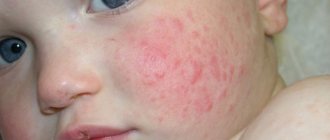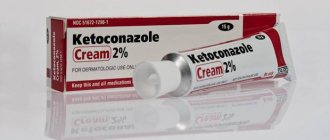Local gynecologist
Lukyanova
Yana Sergeevna
Obstetrician-gynecologist, endosurgeon Member of the European Society of Gynaecological Endoscopy Member of the European Society of Human Reproduction and Embryology
Make an appointment
Vulvovaginitis is a primary non-infectious or infectious inflammation of the mucous membrane of the external genitalia and vagina in girls or women. Most often, vulvovaginitis is diagnosed in girls under ten years of age, as well as in postmenopausal women, which follows from the characteristics of age-related physiology. Doctors call the peak incidence period from 3 to 7 years. The disease is characterized by a high prevalence; such a diagnosis is made in 60–80 percent of all cases. The complexity of the problem lies in the sluggish and slow progression of the disease. Often doctors have to deal with relapses and transition to the chronic stage, which is more difficult to treat. In addition, vulvovaginitis is treated in combination with the elimination of the inflammatory process of other organs of the genitourinary system, as well as as a possible development of long-term consequences of reproductive dysfunction of the woman’s body.
Classification
Based on the clinical and etiological principle of the development of diseases, two types of vulvovaginitis are distinguished:
- primary non-infectious,
- primary infectious.
Primary non-infectious vulvovaginitis is characterized by traumatic, allergic, parasitic, dyshormonal, dysmetabolic origin and occurs with specific secretions.
According to etiology, infectious diseases are:
- nonspecific,
- specific.
They are classified according to age criteria:
- vulvovaginitis in girls,
- women of childbearing age,
- postmenopausal women.
According to the duration of the flow, the following are distinguished:
- acute (up to one month),
- subacute (up to three months),
- chronic (more than three months).
According to the nature of the course, vulvovaginitis is:
- persistent,
- recurrent.
Causes of vulvovaginitis
The question arises, where does it come from, this vaginitis, in a small child?
There are many reasons for vaginitis, but we will give the main ones:
- Allergic reaction
- Excessive efforts to wash the baby “to shine” - mothers wash away the natural protection of the vagina.
- Viral infections (ARVI, rubella, chicken pox and many others), when the virus spreads through the blood and lymph throughout the girl’s body, including the vagina. But it is worth noting that in such cases, vaginitis does not require treatment as such, since eliminating the cause itself, that is, the viral infection, will also lead to the disappearance of the symptoms of vaginitis.
- Vaginitis often occurs as a result of swimming in pools with chlorinated water. In this case, chlorine acts as an irritant, and irritation appears in the genital area. This condition is not observed in all girls, but only in those who have a reaction to chlorine, so you should not prohibit your child from visiting the pool due to this.
- Sea, public beaches, where there are a huge number of people per square meter
- A foreign body in a girl’s vagina (a bead, a small toy, a string).
- Also, the reasons for the development of vaginitis in girls are decreased immunity and endocrine diseases.
Vulvovaginitis in children is divided into specific, caused by an infectious agent - Trichomonas, chlamydia, tubercle bacilli and others, and nonspecific, caused by viruses, yeast-like fungi and other agents that are opportunistic, that is, causing the development of infection under certain conditions.
Symptoms and signs
What is it and how does the disease manifest itself? Before diagnosis, the gynecologist communicates with the patient, listening to all her complaints. It could seem. that in each individual case the disease has its own symptoms, however, despite the many different etiological factors of vulvovaginitis, their clinical signs are generally similar.
Acute vulvovaginitis is characterized by pronounced signs of a local inflammatory process. Patients, before they are given such a diagnosis, during consultation with a doctor complain of the following symptoms: pain, burning and itching, which become stronger during urination, when walking, and sexual intercourse.
Upon examination, the external genitalia of patients look swollen, the doctor observes hyperemia of the vulva, and symptoms such as redness, scratching and maceration of the skin of the perineum and thighs are not uncommon.
Severe and advanced stages of vulvovaginitis are characterized by the appearance of erosions in the area of the external genitalia. Children suffering from this disease develop neurotic reactions due to itching, symptoms of anxiety appear, and sleep is disturbed.
The manifestation of general infectious symptoms (body temperature rises, regional lymph nodes enlarge) occurs in rare cases. If the patient comes with such symptoms, this should especially alert the doctor, who will prescribe additional diagnostic measures.
Usually they complain about the presence of discharge, which differs in each specific case. They can be scanty or abundant in volume, and distinguish between watery, serous-purulent, purulent, and bloody discharge in nature. If we are talking about curdled discharge, then thrush is treated.
Often a characteristic of the discharge is an unpleasant specific odor; the presence of such a symptom is also a reason for conducting examinations.
In the chronic form of vulvovaginitis, the main symptom is pathological discharge from the genital tract and a feeling of constant persistent itching in the vulva area. The disease worsens after hypothermia, poor nutrition (abuse of sweets, spicy foods, excessive consumption of extractive substances), and intercurrent diseases.
In little girls, this form of the disease leads to another problem. The disease promotes the formation of synechiae (fusion) of the labia minora, which can interfere with the process of urination. Prolonged vulvovaginal inflammation leads to an even more serious symptom - the development of cicatricial adhesions in the vagina. With such a disease, further sexual life will be very difficult.
In the case of upward spread of infection, the following often develop: endometritis, salpingitis, oophoritis. Vulvovaginitis of various etiologies is especially dangerous for pregnant women. In principle, it is undesirable to get sick with them, but it is necessary to treat vulvovaginitis. Because if you do not consult a doctor in a timely manner and do not cure such a condition, it can cause spontaneous miscarriage, the development of chorioamnionitis, postpartum endometritis, and infections of newborns.
Are you experiencing symptoms of vulvovaginitis?
Only a doctor can accurately diagnose the disease. Don't delay your consultation - call
Nonspecific vulvovaginitis in girls: assessment of the clinical effectiveness of treatment
In recent years, there has been an increase in the frequency and severity of inflammatory diseases of the vagina of nonspecific etiology in girls, which is obviously associated with the widespread prevalence of dysbiotic conditions, which are a consequence of the often unjustified use of antibacterial drugs. The abundance of treatment regimens used for this group of patients indicates their low therapeutic effectiveness. Long-term antibacterial treatment of chronic nonspecific vulvovaginitis changes the endogenous microflora, causing an increase in the number of strains resistant to antibacterial drugs.
Rice. 1. Causative agents of nonspecific vulvovaginitis in prepubescent girls
Natural protection against inflammatory diseases of the vagina of nonspecific etiology is maintained due to the anatomy of the external genitalia, their functional activity and the composition of normal microflora. It is now generally accepted that the pH value, being a clear indicator of the state of the vaginal ecosystem, makes it possible to detect alarming situations and take adequate measures in a timely manner. An analysis of gynecologists' prescriptions shows that treatment regimens for pathologies of the external genitalia, including inflammatory diseases, are very complex and require the use of several medications. Moreover, unfortunately, drug therapy does not always live up to expectations. At the same time, observing the rules of intimate hygiene is certainly the basis for successful treatment.
The purpose of our study was to evaluate the clinical effectiveness of treatment of nonspecific vulvovaginitis with Hexicon®D intravaginally in girls.
The study included 25 girls before menarche (from 2.5 to 11 years) with a diagnosis of nonspecific vulvovaginitis. The patients were divided into 2 groups: the first group included 12 girls, who were treated in a hospital setting by a specialist in gynecology of childhood and adolescence with Hexicon®D intravaginally, and 13 girls who were treated at home (Hexicon®D suppositories were administered intravaginally by mothers ).
The drug Hexicon®D - vaginal suppositories for local use (manufactured by Nizhpharm OJSC) - was used as monotherapy 2 times a day for 10 days.
All patients complained of vulvar hyperemia, yellowish vaginal discharge, less often itching and discomfort in the external genital area, and sometimes burning after urination.
In all examined patients, specific vulvovaginitis (PCR diagnosis of STIs) was excluded.
The examination complex, in addition to a gynecological examination with an assessment of the condition of the external and internal genital organs and the nature of the discharge, included an integral assessment of the state of the vaginal microcenosis, based on cultural diagnostics (culture of vaginal discharge) and bacterioscopy of a vaginal smear stained with Gram. The study was carried out twice in each patient - before and after treatment.
The vaginal microbiota of girls with nonspecific vulvovaginitis was dominated by epidermal staphylococcus and enterobacteria (Escherichia coli, Proteus, Klebsiella) - found in every second girl and amounting to 23.0 and 19.7% among all isolated cultures. Enterococci were detected just as often - 19.7%, and beta-hemolytic streptococci were isolated from every third girl (inoculation rate - 12.3%).
As can be seen from the data in Figure 1, in pre-pubertal girls the main causative agents of vulvovaginitis were coliform bacteria (E. coli dominated) and enterococci (64.6% of the identified pathogens). Anaerobic vaginitis was detected in 16.1%. Staphylococcus aureus and beta-hemolytic streptococci of various serogroups were often detected as pathogens (9.7% each in the spectrum of pathogens).
A clinical assessment of the effectiveness of treatment was carried out (based on the relief of symptoms of the disease, the results of a repeated gynecological examination) and microbiological (based on the results of a study of vaginal discharge 5–7 days after completion of the course of therapy).
A good treatment result was noted in all cases of coliform, enterococcal, and staphylococcal etiology of vulvovaginitis in girls. As for beta-hemolytic streptococci, persistence of group B streptococci continued after the end of treatment, while streptococci of other serogroups were completely eliminated.
It should be noted that hyperemia of the external genitalia, itching and discomfort, and swelling disappeared in all patients of group 1 treated in the hospital on days 3–5 of treatment. And in patients of group 2, hyperemia of the external genitalia, itching and discomfort were relieved only on the 7th–8th day. Upon detailed questioning of the mothers who carried out the medical manipulations, it was found that the majority of mothers, “feeling sorry” for the children, arbitrarily reduced the frequency of administration of suppositories (they administered suppositories not twice a day, but once), which led to a slowdown in the healing process. In cases where mothers strictly followed the doctor’s recommendations, the timing of improvement did not differ from those in the group of patients treated inpatiently.
During the treatment, complaints about pathological vaginal discharge and a burning sensation during urination disappeared in all patients. During a gynecological examination, the condition of the vulva and vagina allowed us to exclude the presence of an inflammatory process of the vulva.
Conclusions.
Based on the study, it can be concluded that Hexicon®D is an effective drug for the treatment of children with nonspecific vulvovaginitis caused by bacteria of the intestinal group, Staphylococcus aureus and streptococci, but not group B.
It is recommended to use Hexicon®D intravaginally in girls in strict accordance with the instructions, under the close supervision of a specialist in order to quickly relieve the manifestations of vulvovaginitis.
Rules of intimate hygiene for girls
A girl’s intimate hygiene begins from the moment of her birth. Immediately after birth, the vagina is filled with thick mucus, and in the folds of the skin there are accumulations of the so-called “vernix” (smegma, vernix), which is a cheese-like gray-white substance that is difficult to remove. Vernix lubrication protects the fetal skin from the effects of amniotic fluid and has bactericidal properties. However, during decomposition and oxidation after 1–2 days, due to the “rancidity” of the fats contained in it, it becomes a breeding ground for various microorganisms that can cause irritation and inflammation of surrounding tissues. The skin of the external genitalia of girls before puberty is characterized by increased vulnerability, as it consists of fewer layers of cells. Under these conditions, if hygiene is not observed, urine and feces, getting on the external genitalia, can increase the pathological effect until the appearance of maceration, hyperemia and inflammation of the skin of the perineum and the mucous membrane of the vulvar ring. If a newborn girl has bleeding from the genital opening (on the 3rd–6th day), which is one of the manifestations of a “sexual crisis,” this means that additional conditions are being created that are conducive to the occurrence of vulvitis and even vulvovaginitis.
In this regard, the perineum and external genitalia of a newborn girl require regular hygienic treatment and, of course, changing diapers. However, regardless of the type of diapers, they must be changed every 1.5–2 hours (at least every 3 hours). The use of diapers for constant wear in girls over 1.5 years of age should be avoided.
After stopping the use of diapers, the frequency and technique of hygiene procedures for the girl changes.
On average, until the age of 5 years, girls receive help from adult family members in matters of intimate hygiene. During this period of life, it is important to instill in a girl the correct intimate hygiene skills, the stereotype of proper washing - 2-3 times a day.
When washing the external genitalia, ordinary soap is used extremely rarely, but you can use special gels for intimate hygiene for girls.
In childhood, the product should be applied only to the outer surface of the labia majora, avoiding getting into the genital opening.
Diagnostics
What tests do you need to take to check if you have the disease? In order to identify and clarify the diagnosis of the etiological form of vulvovaginitis in women, the hospital performs comprehensive instrumental and laboratory diagnostics. The disease is diagnosed by performing the necessary examinations, tests, and using various diagnostic methods.
The doctor performs a gynecological examination in a speculum (not performed on girls). According to indications, colposcopy (vaginoscopy is performed for girls) and cervicoscopy are prescribed. Examination in the mirrors of women reveals signs of inflammation: swelling of the mucous membranes of the vagina and vulva, hyperemia, the presence of dense gray films on the surface of the vagina, and abundant leucorrhoea (pathological discharge). Signs of inflammation are swelling and hyperemia of the mucous membrane, and pathological vaginal discharge. In some cases, the use of the method, namely the insertion of a gynecological speculum, which is carried out by a doctor, is characterized by pain for the patient.
A smear analysis of flora from the vagina, cervical canal and urethra (urethra) is mandatory. In girls, analysis is taken using a special method, exclusively from the posterior fornix of the vagina and urethra using a special Volkmann spoon. The inflammatory nature of the pathological process is revealed if the analysis shows an increased number of leukocytes and the presence of bacteria.
Mandatory methods are PCR diagnostics for the addition of other diseases, tests for major urogenital infections that are transmitted through sexual contact, including tests for trichomoniasis, gonorrhea, mycoplasmosis, ureaplasmosis, gardnerellosis, human papillomavirus (HPV), cytomegalovirus (CMV).Also It would be a good idea to get tested for chlamydia and genital herpes. The most highly accurate diagnostic method is the fluorescent antibody (MFA) method.
In order for the treatment to achieve maximum effect in the future, bacteriological culture of the vaginal microflora is performed to determine sensitivity to antibacterial drugs, which in the future makes it possible to quickly cope with the disease.
A general urine test is mandatory; girls are also scraped for enterobiasis.
Differential diagnosis is carried out between specific and nonspecific vulvovaginitis. To exclude inflammatory pathology of the uterus and appendages, an ultrasound scan of the pelvic organs is performed.
Vulvovaginitis - symptoms and how to treat?
Vulvovaginitis is an inflammation of the vulva (vulvitis) and the vaginal mucosa (vaginitis). It occurs mainly in girls, elderly women and very rarely in women of childbearing age. The causative agents of vulvovaginitis are most often purulent and intestinal flora, helminths (pinworms), etc.
The provoking factors and main causes of inflammatory diseases of the lower parts of the female genital organs include:
- non-compliance with genital hygiene;
- sexually transmitted infections (STIs): frequent changes of sexual partners, refusal to use condoms are the main causes of inflammatory diseases of a specific etiology (chlamydia, gonorrhea, etc.);
- endocrine diseases (diabetes mellitus, hypothyroidism);
- traumatic injuries to the genital organs (rough sexual intercourse, first sexual intercourse, ruptures during childbirth, wearing tight and synthetic underwear, wearing an intrauterine device);
- childhood infections in girls (measles, scarlet fever);
- physiological reasons: pregnancy, menstruation;
- hormonal changes: during pregnancy, during menopause;
- uncontrolled use of antibiotics, hormonal drugs;
- chemotherapy and radiation therapy for cancer;
- reduced immunity and immunodeficiency states (HIV infection);
- hypovitaminosis;
- diseases of the gastrointestinal tract and allergic diseases;
- termination of pregnancy, curettage for medical reasons.
The symptoms of vaginitis (colpitis), vulvovaginitis and vulvitis are quite similar.
The main symptoms of vaginitis (colpitis), vulvovaginitis, vulvitis:
- itching and burning of the genitals;
- copious vaginal discharge (milky, purulent, foamy, curdled, and in severe cases bloody). With senile vaginitis, on the contrary, dryness of the vaginal mucosa is characteristic;
- unpleasant odor of discharge;
- redness and swelling of the external genitalia;
- aching pain in the lower abdomen, pain during sex;
- frequent urination;
- increase in body temperature.
The listed symptoms can be expressed to a greater or lesser extent depending on the cause and form of inflammation.
Clinically, vaginitis (colpitis), vulvovaginitis and vulvitis can occur in acute or chronic form. In the acute form of vaginitis (colpitis), vulvovaginitis, vulvitis, the symptoms of the disease are pronounced.
To prevent vulvovaginitis in childhood, it is recommended to carry out general health measures, treat foci of chronic infection, and maintain personal hygiene. In older women, vulvovaginitis occurs against the background of physiological changes in the vaginal mucosa.
Chronic vulvovaginitis can contribute to the development of vulvar kraurosis - when the tissues of the external genitalia become dense, cracks and erosions often occur, and a secondary infection occurs. Kraurosis refers to background diseases, that is, diseases against which cancer can occur. In addition, chronic vulvovaginitis is a source of infection in a girl’s body, which undermines her immune system and increases sensitivity to other pathogenic influences.
To decide on treatment tactics, you need a full consultation with a gynecologist, which includes:
- Gynecological examination in speculum (not performed on girls). When examined in the mirrors, signs of inflammation are determined in women: the mucous membranes of the vagina and vulva are swollen, hyperemic, the surface of the vagina is covered with dense gray films, leucorrhoea (pathological discharge) flows profusely. Inspection and insertion of the speculum causes severe pain.
- A smear of flora from the vagina, cervical canal and urethra (urethra). In girls, smears are taken only from the posterior fornix of the vagina and urethra using a special Volkmann spoon.
- PCR diagnostics for major urogenital infections (trichomoniasis, gonorrhea, mycoplasmosis, ureaplasma, gardnerellosis, human papillomavirus (HPV), cytomegalovirus infection (CMV), chlamydia, genital herpes).
- Bacteriological culture of vaginal microflora to determine sensitivity to antibiotics.
All information is for informational purposes only. If you have any health problems, you need to consult a specialist.
Causes
Many people who are faced with this diagnosis are looking for the reasons for the development of this unpleasant condition. It should be noted that the main role in the development of the disease is given to the infectious factor. In girls under 10 years of age, the pathogens are representatives of nonspecific bacterial microflora. The main cause is Escherichia coli, in second place are Staphylococcus aureus and Diplococcus; carriers can be enterococci, chlamydia, and anaerobes. In women of childbearing age, vulvovaginitis is most often caused by pathogens of genital candidiasis (in 30-45 percent of cases); the cause of the disease can also be a nonspecific bacterial infection. The cause of the development of the disease is found in unprotected sexual intercourse, which contributes to the occurrence of vulvovaginitis due to sexually transmitted infections: chlamydia, gonorrhea, mycoplasmosis, ureaplasmosis, trichomoniasis, genital herpes and other STIs.
Regardless of the age criterion, improper intimate hygiene is considered to be a factor provoking the development of vulvovaginitis; Moreover, the reasons may lie not in a lack of hygiene procedures, but, on the contrary, in their excess. It should be remembered that too frequent washing and douching with the use of antiseptics and cleansers is just as dangerous as neglecting hygiene procedures.
Uncontrolled treatment with antibiotics, taking glucocorticoids, cytostatics, COCs, and radiation therapy can provoke the disease with the subsequent addition of an infectious-inflammatory process.
Pregnancy, genital prolapse, trauma and scratching of the vulva, eczema of the skin of the perineum and anus, chronic stress, and prolonged uterine bleeding can lead to the development of vulvovaginitis.
Damage to the vagina and vulva occurs with genital tuberculosis and diphtheria. Recently, experts have been talking about an increase in the etiological role of microorganism associations in the development of vulvovaginitis.
The causes of primary non-infectious forms of the disease are foreign bodies in the vagina, masturbation, helminthic infestations (enterobiasis).
Recurrent vulvovaginitis is observed in individuals who suffer from endocrine metabolic disorders (including diabetes mellitus, obesity), genitourinary tract infections, intestinal dysbiosis, allergies, and common viruses. In the postmenstrual period, there is a high incidence of atrophic vaginitis.
Risk factors include:
- stress;
- injury to the vulva and/or vagina;
- pregnancy status;
- certain medications (use of antibiotics, cytostatics, glucocorticosteroids);
- development of hemorrhoids;
- presence of uterine bleeding;
- genital prolapse;
- immunodeficiency states;
- eczema of the perineal skin.
In children, the high prevalence of the disease is due to a state of hormonal rest (lack of ovarian function), anatomical features (close location of the anus to the genitals, thin and loose mucous membrane), alkaline reaction of vaginal secretion, and improper hygiene.
During the postmenopausal period, women may get sick due to changes in the vaginal microflora and a decrease in local protective mechanisms against the background of an age-related lack of the hormone estrogen.
A healthy woman is not afraid of the disease. Her body has natural local defense mechanisms that do not allow pathogens to multiply and penetrate into the underlying tissues, limiting and preventing the inflammatory process from spreading. Such mechanisms include intact mucous membrane, normal, balanced vaginal microflora, pH 4-4.5. With a decrease in the protective properties of the vaginal ecosystem, vulvovaginitis develops, which widely opens the door for the upward spread of infection to the internal genital organs.
Vulvovaginitis in infants, as a rule, occurs due to infection during the passage of an infectious mother through the birth canal. Moreover, transplacental infection of the fetus is possible, in particular with a viral course of the disease.
Vulvitis in children: causes and solutions
home
Articles
Diseases
Silenko Oksana Nikolaevna
Pediatric gynecologist, candidate of medical sciences
27.06.2019
Vulvitis, or inflammation of the vulva, is a common gynecological disease in girls from 1 to 8 years of age.
There are many reasons for the development of vulvitis. There are infectious (bacterial, viral), as well as non-infectious (due to enterobiasis, vaginal foreign body, etc.) causes.
But the most common cause of vulvitis is
- metabolic disorders in the child’s body,
- acute viral infections,
- allergy,
- intestinal dysbiosis,
- urinary tract diseases,
- various acute childhood infections.
In 85% of cases, vulvitis in preschool age is a secondary process resulting from underlying diseases.
Currently, food allergies are increasingly manifesting themselves on the genitals. Therefore, there is a risk that the girl will develop vulvar allergic dermatosis. Intestinal dysbiosis can also contribute to vaginal dysbiosis and subsequently be the cause of the development of vulvitis.
In the development and maintenance of the inflammatory process, predisposing factors are
- anatomical features,
- developmental abnormalities of the external genitalia
- and physiological characteristics of girls at this age.
Local immune defense mechanisms in girls during this period of development are only in a state of functional formation, and their role is minimal. And frequent and chronic diseases in a child reduce local immunity and, as a result, the normal functioning of the vaginal microbiocenosis is disrupted.
The main complaints of girls are itching and (or) burning of the external genitalia, discomfort when washing... and their mothers may notice redness and (or) discharge in the vulva area or on the girl’s panties.
Successful treatment of inflammatory diseases of the genital organs largely depends on
- the usefulness of laboratory diagnostics,
- comprehensive examination of the child by specialists,
- correct assessment of the clinical diagnosis of vulvitis by a pediatric gynecologist.
Prevention of violations of a girl’s reproductive health lies in the state of her general physical health.
A must
- observe the rules of personal hygiene,
- monitor the maintenance of immunity,
- restrict your child from unhealthy eating habits,
- promptly sanitize foci of chronic infection (especially tonsillitis, cystitis, upper respiratory tract diseases).
And timely sanitation of the vulva and vagina, correctly selected antibacterial treatment by a pediatric gynecologist
during the acute course of the disease,
it will prevent the transition to a chronic course of vulvitis
and vulvovaginitis and help strengthen the reproductive potential of the girl.
The material was prepared on the basis of the dissertation work “Clinic, diagnosis and treatment of gynecological pathology in girls with urinary tract infections”, Ph.D., O.N. Silenko.
- Share
Scoliosis. Causes, diagnosis and treatment
Be careful - rotavirus!
Return to list
Doctors treating this disease
Which doctor treats this condition? If you suspect any type of vaginitis, women need to make an appointment with a gynecologist at a antenatal clinic or a private medical center to choose the most effective method of therapy. Since vaginitis is treated on an outpatient basis, it makes no sense to go to the gynecological departments of city and regional hospitals. In order to clarify the diagnosis of recurrent vulvovaginitis and perform additional studies, consultation with specialized specialists may be required: venereologist, allergist, endocrinologist, urologist, etc.
Symptoms
- Swelling of the skin of the external genitalia and their redness.
- Itching, peeling of the skin.
- Discharge of varying intensity and color, with or without odor.
- When urine comes into contact with the skin, itching and burning intensify due to irritation.
- Poor appetite, irritability, troubled sleep.
To make a diagnosis, you need to be examined by a doctor. If there is a suspicion of infection, then also a smear. If necessary, a culture with sensitivity to antibiotics can be done. In addition, a perianal scraping will be examined to exclude enterobiasis (pinworms), the level of glucose in the blood will be determined, and a general urine test will be prescribed. If vulvovaginitis recurs, this is a reason to undergo examination by an ENT specialist, an allergist, or a dermatovenerologist in order to exclude foci of chronic infection and allergies.
Treatment
How to treat vaginitis? During the existence of the disease, doctors have developed a large number of methods for its treatment. There are several methods of treating this disease, but effectiveness occurs only with an integrated approach to therapy and the patient’s compliance with all recommendations given by the attending physician. Treatment of vulvovaginitis must be carried out without fail, regardless of the stage or form of the disease, severity of symptoms, or age of the patient. Will cure the disease:
- use of etiotropic drugs,
- local treatment of the genitals with disinfectant and antiseptic compounds,
- elimination of provoking factors and associated ailments, restoration of normal vaginal microflora.
The etiotropic method of treating vulvovaginitis involves the use of medications that act directly on the pathogen. For this purpose, local (in the form of vaginal tablets, suppositories, ointments) and systemic antibiotics are prescribed. Considering the high prevalence of vulvovaginitis of polymicrobial etiology, the use of multicomponent drugs that have a local antibacterial, antimycotic and antiprotozoal effect is very important. The use of this method has good results.
For vulvovaginal candidiasis, treatment methods are somewhat different. It is necessary to take and use local antifungal drugs.
The principles of treatment are aimed not only at destroying the pathogen, but also at strengthening the immune system and restoring the vaginal microflora. Methods for restoring microflora involve intravaginal administration of probiotics and their oral administration. The doctor gives recommendations for the treatment of vaginitis; prices vary depending on the class and equipment of the medical center.
Indications for the disease
A number of doctor's indications for this disease will help alleviate symptoms and recover faster.
If you have vulvovaginitis in childhood, you should not ignore the testimony of specialists. They relate to general health measures, elimination of foci of chronic infection, and personal hygiene.
In older women, vulvovaginitis develops against the background of physiological changes in the vaginal mucosa. To relieve the symptoms of vulvovaginitis, they are shown sitz baths and douching with herbal decoctions, antiseptic solutions, and the use of vaginal suppositories. Treatment of underlying pathological conditions is required to reduce allergic mood, correct glycemic levels in diabetes mellitus, sanitize infectious foci, etc.
If specific vulvovaginitis is detected, treatment of the sexual partner is required. Sexual rest is required until the end of treatment.
Correction of nutrition, normalization of weight, and changes in hygiene habits are also important. In certain cases, the elimination of provoking factors leads to a permanent cure of vulvovaginitis without subsequent relapses. To monitor the situation after a course of therapy, a control bacterioscopic and microbiological analysis of discharge from the genital tract is performed.
Vulvovaginitis in girls and age-related microflora norms
The anatomical features of the structure of the genitals and the gradual formation of the biocenosis of the genital tract in pre-pubescent girls are often associated with the development of inflammatory diseases of the vagina and vulva. The most common variant is a combined lesion - vulvovaginitis.
Normal indicators of the microflora of the vagina and vulva in growing girls are related to age; thus, the criteria for identifying pathology are based on studying the state of the biocenosis of patients from different age groups. When classified depending on age, vulvovaginitis is distinguished during infancy (0–12 months), childhood (1–8 years), prepubertal (from 8 years to menarche) and puberty (from menarche).
In the process of microflora formation, the interaction between the patient’s hormonal and immune systems plays a key role—in particular, the state of local immunity is extremely important. The functional state of the ovaries and the presence of lactoflora are also very significant.
Infection of the vagina and vulva in girls is facilitated by a number of factors, among which the leading positions are occupied by the anatomical and physiological characteristics of the genitals, various extragenital diseases, as well as exogenous pathological factors. In addition, it should be taken into account that patients who live in unfavorable social and living conditions and do not follow the rules of personal hygiene are more susceptible to vulvovaginitis.
In girls before birth and in the early period after it, the vaginal mucosa consists mainly of 3–4 layers of intermediate-type squamous epithelium. At the same time, from the placental bloodstream or with mother's milk, epithelial cells receive doses of estrogens and progesterone, under the influence of which they can produce glycogen, and therefore support the vital activity of lactic acid bacteria. After 3–4 hours of the neonatal period, lactobacilli, bifidobacteria and corynebacteria, as well as single coccal elements, are found in the vagina. During this period, desquamation of the epithelium intensifies and turbidity of the cervical mucus occurs.
Over time, lactic acid accumulates in the lactoflora, which means that the acid-base balance of the girl’s vaginal environment shifts to acidic (pH = 4.0–4.5). Along with lactobacilli, the vaginal mucosa is protected by bifidobacteria. They prevent the effects of pathogenic and opportunistic microorganisms, as well as their toxins, and also stimulate the formation of interferon and the production of lysozyme. Mainly, high resistance in newborn girls is promoted by the dose of immunoglobulins G (IgG), received from the mother through the placenta.
The level of estrogen in a girl’s body drops within 10 days after birth. During this period, the so-called sexual crisis occurs and the appearance of menstrual-like discharge in approximately 10% of newborns. Epithelial cells lose their ability to proliferate and synthesize glycogen.
By the end of the first month of life, the vaginal epithelium is composed of basal and parabasal cells. The reaction of the vaginal contents becomes alkaline, and the pH level increases to 7.0–8.0. Lactobacilli and bifidobacteria disappear, the epithelium becomes thin and vulnerable, and coccal and bacillary flora begin to predominate in the vagina.
From two months of life until the onset of menarche, epidermal staphylococcus (84%), diphtheroids (80%), bacteroides and peptococci (76%), peptostreptococci (56%), eubacteria (32%), gardnerella vaginalis (32) predominate in the vagina without pathology % in girls of school age), mycoplasma (9%, mainly in patients under 9 years of age).
New changes in the structure of the vaginal epithelium occur after 9 years: increased proliferation, maturation, accumulation of glycogen. By the age of 10, the pH of the environment again shifts to acidic due to the colonization of lactobacilli.
By the age of 12, lactoflora predominates in the smears of healthy girls, and by the age of 13–14, the pH of the vaginal environment finally becomes acidic due to the proliferation of lactobacilli and the maturation of the epithelium under the influence of estrogens. If in the “neutral” period the frequency of vulvovaginitis leads in the structure of gynecological morbidity, amounting, according to various sources, to 82–85%, then after 10 years it drops to 30–40%, and menstruation disorders occupy the first place in pubertal patients.
All the information presented is presented in more detail in the textbook “Inflammatory diseases of the genital organs in girls” by Olga Evgenievna Baryaeva (Irkutsk State Medical University).
Contraindications
There are several contraindications for the disease, and most of them relate to restrictions on the use of certain foods. In case of vulvovaginitis, it is strictly prohibited:
- consumption of alcoholic beverages, fatty, salty, spicy, smoked and sweet foods, foods with any food additives;
- Fast food, semi-finished products, instant food are prohibited;
- If you have an allergic predisposition, you should exclude foods that provoke allergy attacks.
Cost of initial appointment
The cost of treatment for vulvovaginitis at JSC Meditsina (Moscow) is presented in the table below. Please note that prices are listed by category to make it easier to find the service you need. The price of the primary appointment differs from the secondary one. From the table below, you will learn about prices for consultations, examinations, and medical procedures for both adults and children. If you have any questions, you can call our help desk and find out the prices for treatment or the cost of the examinations you need.
Advantages of treatment at the clinic of JSC "Medicine"
JSC "Medicine" is a modern multidisciplinary medical institution that provides a full range of medical services in accordance with the highest international standards. We offer emergency medical care, service in a clinic, a comfortable hospital, high-precision laboratory and instrumental diagnostics, and an ultra-modern Sofia Oncology Center.
The clinic of JSC "Medicine" uses the latest achievements in global healthcare. Among our advantages are the following:
- We are pleased to offer our patients a full range of medical services. We employ more than 300 specialists from 67 medical specialties. Our clinic provides a full range of medical services in various medical areas. There are 69 of them in total.
- We operate on the principle of continuity of stages of medical care: a physician-supervisor treats a patient as a family doctor, internist or pediatrician, coordinates treatment prescribed by specialists, and also participates in the treatment of his patients in a hospital.
- We work according to the best Russian and international standards. JSC "Medicine" is the first Russian medical center that is accredited according to the most reliable international standards for the quality of medical care, Joint Commission International.
- We provide guarantees of the quality of medical care. The Medicine Clinic is responsible for the quality of the services provided. If the complaint is justified, compensation may be paid.
- The best specialists work with us. We are proud of our doctors. Patients are advised by academicians of the Russian Academy of Sciences, professors, and famous foreign specialists. JSC Meditsina has developed a system for training doctors and exchanging experience with the most prestigious clinics in the world. Many areas of the clinic, including the sleep laboratory, traumatology and orthopedics center, chemotherapy and radiation therapy departments, were created in collaboration with foreign colleagues.
- JSC "Medicine" is a multidisciplinary university clinic. At our clinical and educational laboratory bases, scientific and clinical developments are carried out in many medical areas. We are advised by academicians and corresponding members of the Russian Academy of Sciences, professors and leading experts in various fields of medicine. The educational and laboratory base of the department is located in the building of the Medicine clinic.
- Exchange of experience with the best medical centers in the world, accredited by JCI, advanced training of doctors and partnerships with leading medical institutions in the USA, Europe and Israel put the Medicina clinic in a leading position. You can learn about our doctors, their work experience, education and experience on the resource of our medical center.
- We use an advanced IT infrastructure, using an electronic medical record (EHR) of our own design with a system for checking drug prescriptions. We have implemented digital archive solutions that allow storing the results of medical research obtained from various medical equipment (computer tomograph, MRI, X-ray machines, ultrasound equipment, endoscopic equipment). JSC Meditsina implemented a smart clinic project, which took into account high requirements for reliability, safety and fault tolerance.
For the convenience of our patients and their relatives, we have created a convenient client-oriented service. Making an appointment with a doctor and viewing your medical data is possible through a mobile application, a personal account on the website, or a Telegram bot. Test results come to hand on disk if you need to get a “second opinion” from specialists at other clinics. With the consent of hospital patients, their relatives can receive SMS notifications about the stages of surgical intervention and observe the hospital and ward online, making sure of the unsurpassed quality of the treatment methods provided in our clinic.










